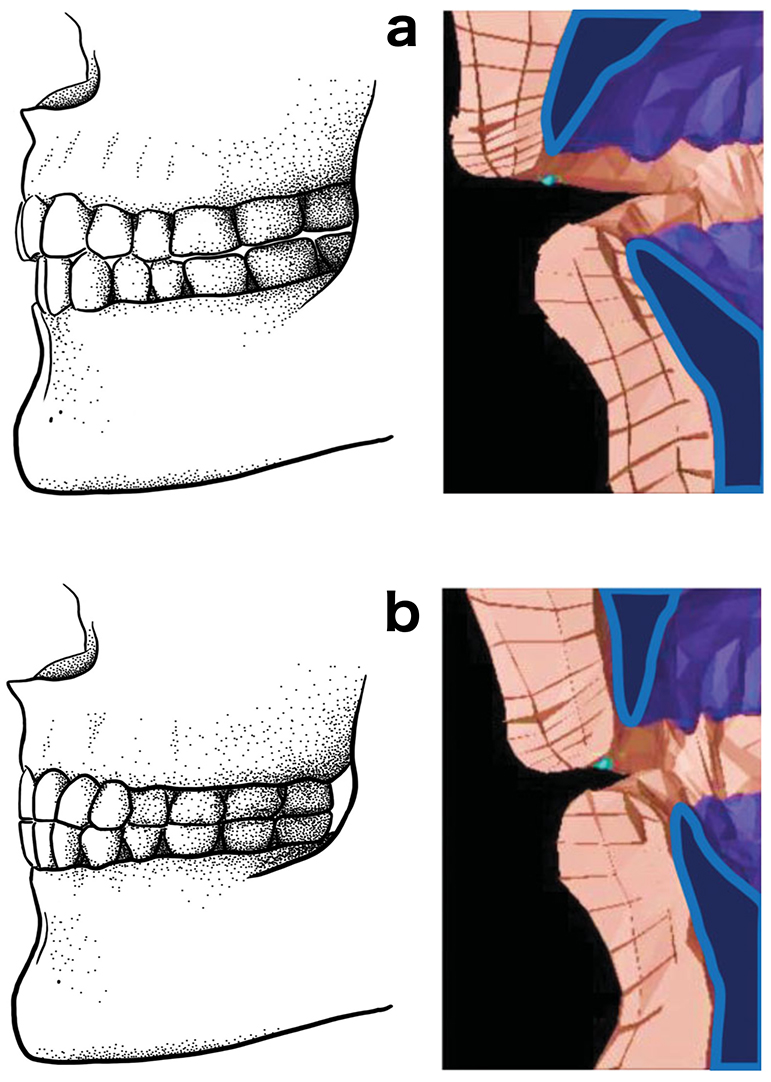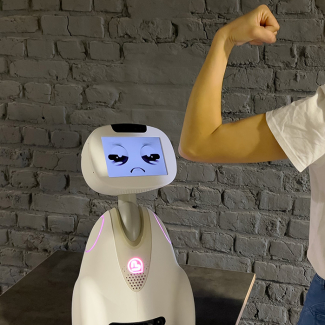
A dietary change may have given rise to the “f” and “v” sounds
Some consonants like “f” and “v” are recent additions to languages, according to an international team led by the University of Zurich and including a researcher from the “Dynamique du langage” laboratory (CNRS/Université Lumière Lyon 2).1 It is thought that these new additions were made possible by changes in our jaw and teeth after the birth of agriculture and the adoption of a diet containing less hard food. This study, published in Science on 15 March 2019, contradicts the theory that the phonetic diversity of human languages has remained fixed since the emergence of our species 300,000 years ago.
- 1Dan Dediu, affiliated to Lumière Lyon 2 University as part of an Idex Lyon Saint-Etienne programme.
Human speech uses an incredibly rich palette, with nearly 900 different sounds. Some languages use only about ten of these sounds, others more than a hundred. In 1985, the linguist Charles Hockett noted that languages using labiodental consonants (produced with the lower lip against the upper teeth), such as [f] and [v], are often spoken in societies with access to soft foods. A team of researchers based in Switzerland, Singapore, the Netherlands and France were rather sceptical and wished to examine this hypothesis with 21st-century tools.
Using databases on the use of labiodentals and type of food production, they were first able to verify that this correlation does indeed exist and is statistically significant. In populations that until recently were still living as hunter-gatherers, for example, in Greenland, South Africa and Australia, [v] and [f] are almost non-existent (with the exception of fairly recent imports from other languages such as Danish, Afrikaans or English).
The researchers then developed a biomechanical model to calculate the muscular strength needed to produce these consonants in Homo sapiens of the Palaeolithic or today. Until the early Neolithic and the birth of agriculture, the diet of our hunter-gatherer ancestors needed to be chewed quite forcefully. This caused tooth erosion and tooth modification so that their incisors touched each other perfectly edge-to-edge. With the development of agriculture and technologies such as the millstone, modern humans retained a juvenile dental occlusion into adulthood, with the upper incisors protruding towards the outside of the mouth, and the lower jaw being slightly set back. Under these conditions, labiodental consonants are pronounced more easily, requiring less muscle strength.
Finally, by reconstructing the history and dissemination of these sounds in the genealogy of Indo-European languages,2 the researchers suggest that in Europe the use of labiodentals increased dramatically only over the course of the last two or three millennia, linked to the growth of food preparation technologies.
This study thus reveals that language can be shaped by culturally induced biological changes. It paves the way for further research that will enable linguists to reconstruct the sounds of languages spoken thousands of years ago. While Caesar probably pronounced “veni, vidi, vici” rather than “oueni, ouidi, ouici”, the pronunciation of other older and less documented languages is much less certain!

Top (a), left: schematic representation of a dental occlusion where the upper incisors protrude slightly towards the outside of the mouth, accompanied by a slight retrognathy of the lower jaw – this type is rather characteristic of a post-Neolithic diet (but also of childhood); on the right, a “stop frame” of the biomechanical model of the pronunciation of a “labiodental” sound (like [f] or [v]).
Bottom (b): same conventions as above, but with edge-to-edge dental occlusion, rather characteristic of a harder diet, requiring strong chewing, which could be found before the emergence of agriculture and food preparation technologies.
© Scott R. Moisik / Tímea Bodogán / Dan Dediu
- 2With phylogenetic methods, used by biologists to reconstruct the tree of life from DNA sequences.
Human sound systems are shaped by post-Neolithic changes in bite configuration. Damián E. Blasi, Steven Moran, Scott R. Moisik, Paul Widmer, Dan Dediu, Balthasar Bickel. Science, 15 March 2019. DOI: 10.1126/science.aav3218


